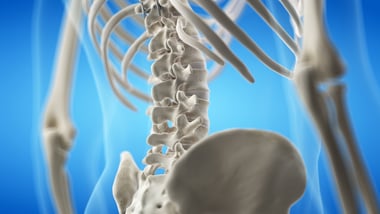Neutral posture is positioning your body so that you have a neutral spine – a position that is reached when your spine is straight, not twisted, and your joints are not bent. A neutral posture also creates alignment between your pelvis, rib cage, and neck.

In neutral posture, your vertebrae are lined up in a specific way that gives your spine the most protection and offers the most stability to your body. Not only does a neutral posture offer your body the most defense against certain types of injuries, but it also requires the least amount of energy to maintain which gives your body more energy for other tasks.
Benefits of Neutral Joint Posture
When you position your body in a neutral posture, you minimize the stress and strain on the surrounding muscles and supporting structures. This reduction helps prevent musculoskeletal disorders including common injuries that occur with twisting, lifting, and compression.
Beyond the reduction in risk of injury, a neutral posture also:
- Improves blood flow to the brain
- Improves lung expansion
- Improves balance
- Improves energy
- Improves endurance
How to Find a Neutral Joint Position
The good news about the neutral joint position is that it is pretty straightforward to get into. The bad news, old habits die hard so setting a timer for every 20-30 minutes for the first few days you are working in the posture is a good way to ensure you haven’t fallen back into poor posture habits.
To find neutral when sitting:
- Step One: Keep your head directly above your shoulders
- Straight back with your head positioned directly above your shoulders
- Step Two: Your feet must be flat on the floor
- Feet flat on the floor or flat on a footrest directly below your knees
- Step Three: Your hips should be level or slightly higher than your knees
- Your knees and hips should make a 90–100-degree angle with your torso
- Step Four: Create an “L” position with your elbows under your shoulders
- There should be a 90-degree angle in your elbows with the top half of your arms directly under your shoulders
- Step Five: Hands/wrists are in a straight line with forearms
- Maintain the hands/wrists in a straight line with the forearms. This may require an adjustment of either the chair height or the height of the surface your hands are required to work off
When it comes to being in a neutral position when seated, it is important to remember that our body’s most comfortable position is to be in straight lines.
To find neutral when standing:
- Step One: Keep your Head Facing Forward
- Adjust your gaze so you are looking straight ahead of you with your ears positioned over your shoulders.
- Step Two: Adjust your rib cage to ensure you are standing directly over your pelvis
- Stack your rib cage over the front of your pelvis to ensure you are not leaning forward or backward.
- Step Three: Move your pelvis so it is perpendicular to the ground
- We tend to stand leaning to one side. Make sure your pelvis is straight under your rib cage and does not slide to one side.
- Step Four: Feet firmly on the ground, hip-width apart
- Your feet should be flat on the ground, with knees aligned directly under the hips and feet aligned directly under the knee
- Step Five: Check the position of three curves in the back
- To verify you are in a neutral position, check that the three curves of the spine are aligned – the inward curve near the neck, the outward curve at the upper back, and the inward curve at the low back.
Find this content helpful? Want to share it with your employees? If so, sign-up for our free PRO Learn Educational Series which can be distributed to your entire workforce.
